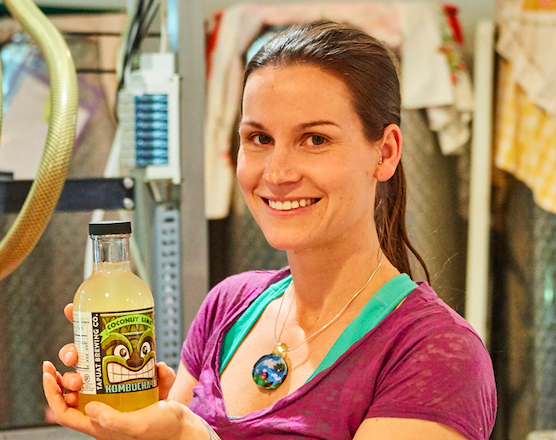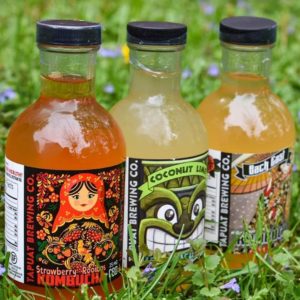Have Your CBD and Eat It, Too?
- Share
- Tweet
- Pin
- Share

These days, it seems like you can’t drive down a bustling street of shops and businesses without seeing at least one of them advertising cannabidiol, commonly known as CBD. In case you haven’t heard yet, CBD is a component of both hemp and marijuana plants that many people laud as having healing and calming properties.
During the last year alone, national CBD sales have increased more than threefold compared to 2018 sales, coming in at more than $185 million, according to Food Business News. By 2024, CBD product sales could total $20 billion. Despite a lack of FDA support, CBD appears everywhere, from the shelves of small local businesses and health-food stores to the aisles of big chain supermarkets and online from vendors across the country.
CBD sellers now offer a range of products and types for every need. You can get CBD in a tincture, oil drops, capsules, salves, lotions and even deodorant-like sticks to apply directly to sore muscles or painful joints. Proponents claim that CBD relieves pain, decreases stress and anxiety, promotes sleep, reduces inflammation and more. In short, it provides all of the touted health benefits of the marijuana plant without any of the high that comes from THC, or tetrahydrocannabinol, the chemical responsible for most of marijuana’s psychological effects.
But maybe – despite what that family member constantly tells you about how CBD lotion has relieved the arthritis in her hands, or how often your co-worker mentions that his CBD tincture helps him sleep soundly through the night – you’re still not convinced about all the hype. Plus, frankly, plain CBD tastes like old grass. Well, there are now many tastier, user-friendly ways to take a daily dose.
With CBD becoming a common part of American life, food and beverage makers – and even restaurants – have begun adding it to juices, smoothies, baked goods, candy, soups and salad dressings.
Colorado Hemp Honey, for example, sells several varieties of honey infused with organic hemp extract and essential oils. (Hemp extract is essentially synonymous with CBD, but it connotes a slightly higher quality than regular CBD.) With 15 milligrams of hemp extract per teaspoon, it’s a delicious way to take in CBD. On its website, the company even provides recipes to make use of this sweet, anti-inflammatory nectar, including a hemp-honey latte with pumpkin spice and turmeric, and hemp-honey roasted vegetables. Now we’re cooking with CBD! How ’bout that.

Photo by Marina Koyen.
Sister Bay kombucha brewer Tapuat Brewing Company has been adding CBD to some of its delicious probiotic drinks since the spring of 2018, and so far, they’ve been quite popular.
“They taste good, and they actually do help alleviate anxiety, calm nerves, reduce joint and muscle pain, promote wound and sore healing, and more,” said owner and creative director Mary Lou Deviley. “This is all feedback we get from real customers.”
So how does Tapuat do it?
“We use a distillate that contains natural terpenes [organic flavor compounds] and other beneficial cannabinoids,” which goes particularly well with kombucha, Deviley explained. “We are just beginning to ‘dry hemp’ some batches of kombucha – much like a beer company would ‘dry hop’ – adding a new level of flavor and nutritional benefit to be enjoyed by the beverage connoisseur.”
Some of Tapuat’s tasty flavors include strawberry-rooibos plus CBD, coconut-lime plus CBD, and cranberry-ginseng plus CBD, which can be found at some supermarkets and on tap at Sister Bay’s Kitschinn Juicery.
What are the drawbacks to cooking with CBD and consuming CBD-infused foods? Well, the CBD you’re consuming might not be as bioavailable (bioavailability is the degree to which CBD actually gets into the bloodstream) as other forms of CBD. According to the popular brand Royal CBD, the method with the most bioavailability is vaping, at 56 percent; followed by oil drops or tinctures administered sublingually, at 25 to 35 percent; then edibles, ranging from 4 to 20 percent. Therefore, swallowing CBD in your daily coffee or a piece of chocolate might not be as effective as absorbing through your lungs or beneath your tongue.
But it’s going to be tastier – and maybe more fun, too. That’s particularly true if you’re trying to give your kids CBD, which some parents swear by for their children’s sleep, attention span, anxiety and more. You might avoid a temper tantrum if it’s mixed with juice or hidden in a delicious muffin. (Consult your pediatrician first, however – especially if your child is on any medications.)
Want to give CBD a try? As with any supplement, research the ingredients and production processes to find a high-quality product. Many companies spell these out on their website for the conscientious consumer. But as for flavor, the sky’s the limit. Whether you choose CBD-infused kombucha or CBD cookie-dough bites (yup, they’re a thing), at the very least, you can tell your nosy relative that you tried it. At the most, it might even reduce what’s ailing you.
To learn more about Tapuat, check out its Facebook page, Tapuat Kombucha; or search @tapuatkombucha on Twitter or @tapuatcha on Instagram.
